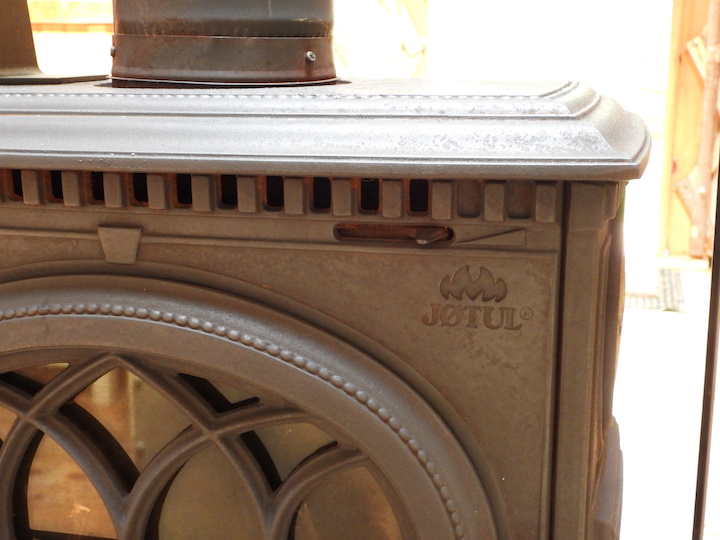Heating the Yurt
The yurt uses a Jotul 3 wood stove as its primary source of heat. The stove is located in the center of the floor and heats the yurt up quickly as long as you get a good fire going. Start with crumpled newspaper, add cardboard, then Fatwood, then kindling then small pieces of hardwood-firewood. Be sure to open the damper- the slide is located at the top left of the stove if you are looking at the front. Pushing the lever to the right openes the damper, pushing it to the left closes the damper. As the fire grows in intensity it is good practice to lower the damper to control the air flow. This is how you get maximum efficiency for the amount of wood being burned. The stove will need to be fed during the night- it is not large enough to burn for 8 hours without being fed. There is a good supply of firewood at the yurt but you are encouraged to bring your own. Be sure it is dry and small, 16 inches in length or less.


An Eco Fan is an off-grid appliance that helps ciruclulate warm air around the yurt to reduce cold spots. Once the woodstove heats up to a certain temperature the fan will start to spin. You will eventually be able to judge the temperature of the stove by the speed of the fan!

Planned for 2019 is a wall-mounted, propane backup heater. This heater will ignite similarly to Piezo propane or natural gas direct-vent heaters in most homes by Rinnai or Empire. The heater will help warm the yurt quickly when arriving in cold temperatures; supplementing the heat from a new or re-kindled fire. It will also maintain a constant ~50-degree temperature in the yurt when guests leave for an extended period of time so reheating the space to a comfortable climate takes less time. The woodstove should remain the primary source of heat to keep cost and environmental impact to a minimum.